Hirschvogel Automotive Group Develops Innovative Products through Additive Manufacturing
As a global supplier, the Hirschvogel Automotive Group develops and produces high-strength parts for the automotive industry and several others. With nine plants across three continents, the vision of the company is to continually improve and to provide competent answers to new questions which arise with growing demands.
Within the Group, Hirschvogel Tech Solutions is a service provider for part development and additive manufacturing (AM) in application areas that extend far beyond forging and automotive. Through a combination of three service components – part development, AM and materials/failure analysis – the company supports its customers with optimum know-how for developing innovative products and high-strength components whether it’s series production for optimised metal components or demonstration parts and fixtures made with polymer Fused Deposition Modelling (FDM) processes.
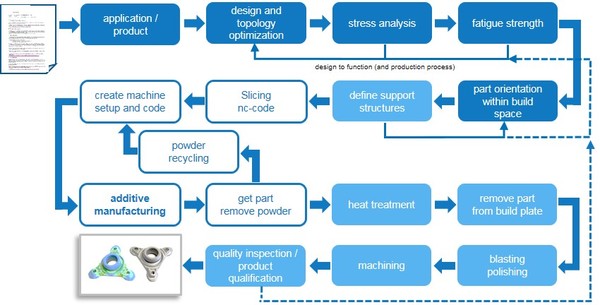
Hirschvogel Tech Solutions AM Process Chain
![]() Innovations Drived by AM
Innovations Drived by AM
Development work at Hirschvogel Tech Solutions is always carried out based on an integrated approach, with a focus on the entire process chain from generative part development to finishing.
To fully exploit the maximum benefits from AM, the company specialises in what it calls “bionic designs” which leverage methods and structures developed by nature over millions of years, addressing functional requirements, and applies them to various areas of engineering and technology.
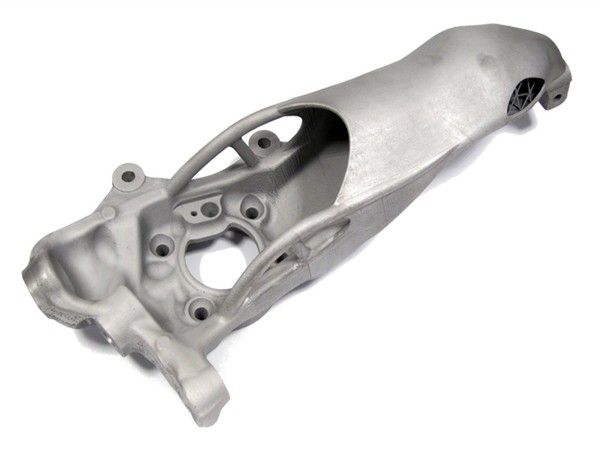
Steering knuckle with bionic structures
This “bionic” approach was recently adopted on a steering knuckle, an automotive part which attaches to the suspension and steering system, where the team was able to achieve a significant weight saving of 40% in the neck area compared to a conventional forged part. All of the necessary performance requirements demanded of the part were fulfilled including dierent load cases and stiness, taking into account the given assembly space.

Optimised lightweight swivel bearing with bionic structures.
To do this, specially developed methods and adapted CAx (Computer Aided Technologies) were applied to produce a fully optimised design that combines light-weighting and a high load-bearing capacity without the limitations imposed by current manufacturing methods.
With a traditional forged part, features such as hollow spaces, free undercuts and interrupted walls are generally not easy to achieve. Therefore, the design process was carried out with AM in mind which allowed the part to be manufactured without the many additional internal support structures that would otherwise be required.
Michael Dahme, Head of Hirschvogel Tech Solutions explained that a specific design process “inspired by lightweight principles and construction methods of nature” was applied which resulted in a mix of topologically optimised lattice structures.
Initially, a number of part variants were developed and assessed before selecting those which were best able to fulfil the given boundary conditions. This was then verified by appropriate calculations to ensure it met all of the necessary requirements.
Skilful positioning of the part, which measures almost 600 mm in length, meant that it could be produced easily in Aluminium AlSi10Mg on SLM Solutions’ SLM 500, a high-performance multi-beam system designed for series production of large complex parts. Due to the part positioning and nature of this powder-based manufacturing process, it was also possible to produce the part with few support structures, and to completely do without internal ones which also resulted in minimal post-processing after printing.
Tests carried out on tensile and notched bar specimens, which were built in the same process, showed that the part successfully matched the forecast values. In addition to significant weight savings, the additively manufactured part also benefitted from reduced internal stress and increased stiffness in two directions.
“The “steering knuckle” demonstrator clearly shows the possibilities and potential of additive manufacturing,” Dahme added. “The weight reduction of 40% achieved in the neck area shows that revolutionary results can be achieved by additive manufacturing, depending on the application and the number of pieces. The path to day-to-day application and series production is mapped out.”
Ralf Frohwerk, Global Head of Business Development at SLM Solutions Group AG confirmed: “The trust of automobile manufacturers in metal-based 3D printing is increasing daily. Thanks to growing understanding of “real and meaningful,” 3D-suitable designing, previously unimaginable designs for vehicle parts are being created. Knowing that nearly every automaker also has vehicle programs with numbers of pieces 2000 – 3000 units per year in its portfolio, there are also already aluminium die cast components today, for example, that can be produced more economically using additive processes.”
Source: TCT magazine

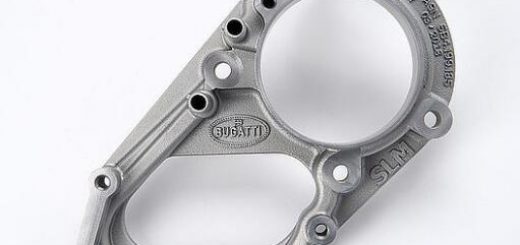
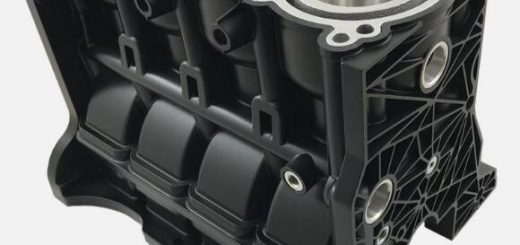
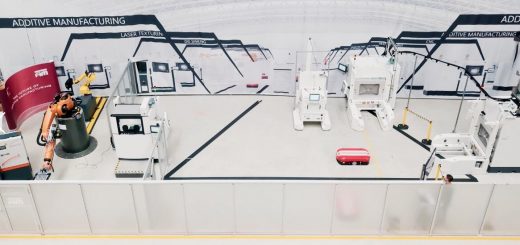
Recent Comments